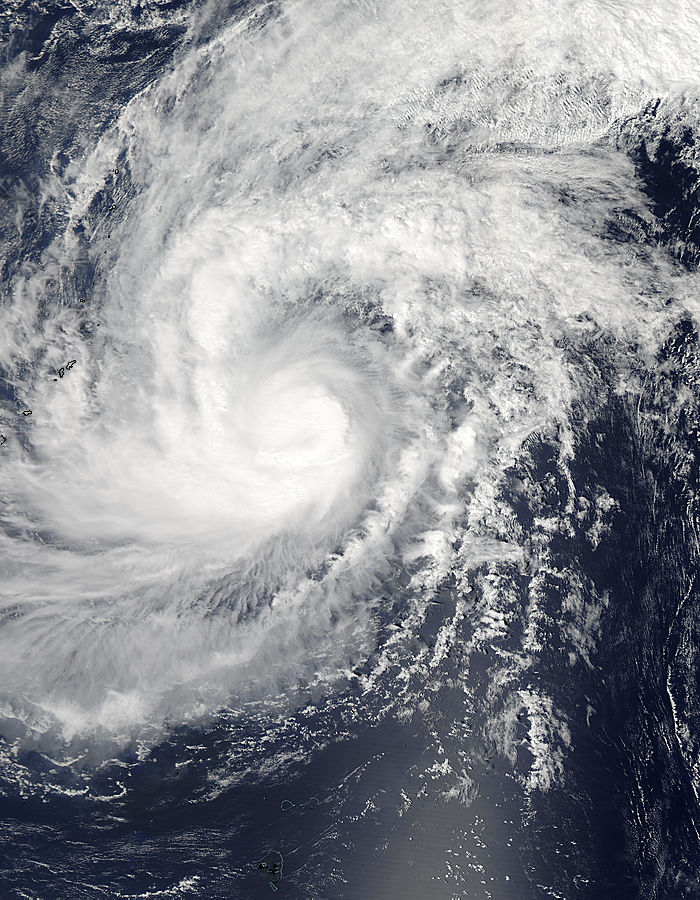NASA Satellite Sees Faxai Hit Typhoon Strength

The MODIS instrument aboard NASA's Aqua satellite captured this image of Typhoon Faxai in the North Pacific Ocean on March 4 at 03:05 UTC. Image Credit: NASA Goddard MODIS Rapid Response Team
On March 4 at 1500 UTC/10 a.m. EST, Tropical cyclone Faxai reached typhoon strength with maximum sustained winds near 65 knots/74.8 mph/120.4 kph.
It was centered near 18.2 north and 151.6 east, about 429 nautical miles east-northeast of Andersen Air Force Base, Guam. Faxai was moving to the north-northeast at 16 knots/18.4 mph/29.6 kph.
On March 4 at 03:05 UTC, the Moderate Resolution Imaging Spectroradiometer or MODIS instrument aboard NASA's Aqua satellite captured an image of Typhoon Faxai in the North Pacific Ocean.
The MODIS image showed tightly wrapped bands of thunderstorms around the center of circulation.
Forecasters at the Joint Typhoon Warning Center or JTWC noted that animated infrared satellite imagery revealed an 8 nautical-mile-wide (9.2 mile/14.8 km) eye feature has developed while the system has become more compact and symmetric.
Thunderstorms around the edge of the system, however, appeared to be weakening.
The JTWC expects Faxai to maintain typhoon strength for a day before weakening.
Text credit: Rob Gutro
NASA's Goddard Space Flight Center
Media Contact
All latest news from the category: Earth Sciences
Earth Sciences (also referred to as Geosciences), which deals with basic issues surrounding our planet, plays a vital role in the area of energy and raw materials supply.
Earth Sciences comprises subjects such as geology, geography, geological informatics, paleontology, mineralogy, petrography, crystallography, geophysics, geodesy, glaciology, cartography, photogrammetry, meteorology and seismology, early-warning systems, earthquake research and polar research.
Newest articles

Trotting robots reveal emergence of animal gait transitions
A four-legged robot trained with machine learning by EPFL researchers has learned to avoid falls by spontaneously switching between walking, trotting, and pronking – a milestone for roboticists as well…

Innovation promises to prevent power pole-top fires
Engineers in Australia have found a new way to make power-pole insulators resistant to fire and electrical sparking, promising to prevent dangerous pole-top fires and reduce blackouts. Pole-top fires pose…

Possible alternative to antibiotics produced by bacteria
Antibacterial substance from staphylococci discovered with new mechanism of action against natural competitors. Many bacteria produce substances to gain an advantage over competitors in their highly competitive natural environment. Researchers…





















